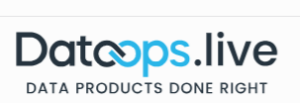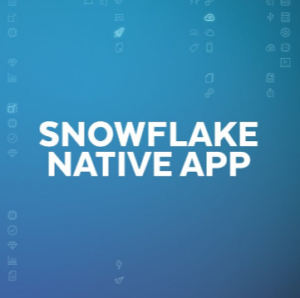You may know Snowflake as a data cloud. That, after all, is the business’s motto. But its business model resembles something else: the iPhone and Apple’s App Store. And as companies look for a place where they can build the next generation of AI-powered apps against their data, Snowflake’s iPhone and App Store approach is gaining traction.
“I always say Snowflake is a data cloud. It’s a cloud where you can run things,” Benoit Dageville, Snowflake’s co-founder of president of product, told a gathering of reporters earlier this week at its Data Cloud Summit in San Francisco.
“But it’s like an iPhone,” he continued. “Our model is that applications are going to be created but you’re going to install this application and run this application within your boundary, within your Snowflake cloud. The beauty of that is that the logic comes to your data. The model comes to your data, not vice versa. So you have full custody and full governance on top of your data when you run these models.”
“Bring the compute to the data” is not a novel idea. It was often repeated during the Hadoop heyday, when the size of data made it prohibitively expensive to copy and move data to distinct servers to process it. But while the Hadoop experiment ultimately exploded in a tangled web of complicated tech and unfulfilled promises, a new generation of data lakes and lakehouses has sprung out of it that offers a new hope that the idea will finally be fulfilled.

Snowflake CEO Sridhar Ramaswamy and co-founder Benoit Dageville talking with reporters at Data Cloud Summit
Having a centralized data store where all the data is governed and secured is once gaining traction, and it’s being driven by companies that are eyeing the AI revolution. Companies are discovering that good well-managed data is the key ingredient to having good, well-managed AI. And to get there, they’re looking at the new generation of data lakes and lakehouses that are built atop open standards, like Apache Iceberg.
But just having an open lakehouse isn’t enough, just like having the world’s most advanced smartphone isn’t enough. One would also like to have a variety of pre-built apps, AI models, third-party data, development tools, and an active vendor community to also be on that data platform. In other words, you want your data platform to resemble the iPhone and the Apple App Store.
To that end, Snowflake has made extensive investments to deliver that iPhone and App Store experience. That includes:
- Snowpark, which allows customers or vendors to build arbitrary applications in Python, Java, and Scala and run them on Snowflake;
- Snowpark “native apps,” which are applications that are native to Snowflake, i.e. they run in a Snowpark container and are fully integrated into the Snowflake ecosystem;
- Snowflake Marketplace, a place where customers and vendors can buy and sell more than 2,600 apps, connectors, and datasets;
- And Cortex AI, a collection of pre-vetted foundation models that customers can use against their Snowflake data.
There was considerable noise around native apps at the recent Data Cloud Summit. Snowflake announced that a handful of vendors have built native apps, which customers can use and run in their private Snowflake accounts. That gives customers real benefits when it comes to ensuring the governance of their data.
Instead of building out pipelines to move data and then testing them to make sure they ’re secure, customers can trust that the Native Apps will abide by Snowflake’s data governance policies, said Jeff Hollan, director of product for Snowflake.
’re secure, customers can trust that the Native Apps will abide by Snowflake’s data governance policies, said Jeff Hollan, director of product for Snowflake.
“Customers don’t have to worry about security anymore, which is huge,” Hollan said in an interview. “Your data never leaves your account, and you get these massive price-performance improvements.”
Customers benefit by being able to manage security and access to data via Horizon, Snowflake’s governance and discovery solution. Vendors also benefit from the native apps, since it prevents customers from seeing the insides of the ML models. “We’re the broker, where we’re securing both sides of the transaction,” Hollan said.
Vendors that work closely with Snowflake are more than happy to turn over the less exciting (but still important) tasks like data governance and security to Snowflake, and just focus on their core strengths, whether it’s AI or data products. In the case of AI21 Labs, that means less to worry about by deploying its hybrid SSM-Transformer model, called Jamba, via Snowflake’s Cortex AI.
“Making Jamba available through Snowflake Cortex ensures that you are actually getting the security that Snowflake provides and it’s a fully managed service,” Dugar told Datanami this week at Data Cloud Summit. “We piggyback on Snowflake.”
Running as a native app on Snowflake brings other practical benefits too. For instance, AI21 Labs customers can interact with the Jamba models using SQL as opposed to Python, Dugar said. They can also interact with Jamba using other products, such as the Streamlit framework, which enables rapid development of Snowflake front-ends.
“The beauty of this is, a developer can use Streamlit to build content apps, and then on the backend they’re actually using Cortex to call the AI21 language model,” Dugar said. “Snowflake has vector databases, embeddings, and of course our LLMs, so it’s an end-to-end solution that Snowflake is providing to their customers.”
Visual AI company Landing AI is also counting on the iPhone-effect to help lift its new native app for the Snowflake Marketplace announced this week.
“A lot of our enterprise customers, they love our tech, but they love Snowflake as an enterprise cloud plus the RBAC [role-based access control], all that governance,” said Dan Maloney, LandingAI’s COO. “We now incur all that, so no data leaves their trusted environment.”
If a Landing AI customer wants to plot some data generated by LandingLens using a Streamlit app, they don’t have to worry about building a data pipeline and securing it. They can just directly access it in their data cloud, and it immediately becomes available via all the other apps that have been deeply integrated into Snowflake.
“Our native app is writing the data back to Snowflake,” Maloney said. “And then all these things like Streamlit and Snowflake Cortex AI that are natively in Snowflake, they just talk to the data whatever you brought back into it.”
Landing AI chose Snowflake’s cloud to build this deep level of integration, and it doesn’t intend to replicate that investment on other data platforms anytime soon, Maloney said. It also allows Landing AI to reach customers on AWS, Microsoft Azure, and Google Cloud, provided they’re Snowflake customers, he said. That deep integration makes things move more quickly.
“It makes it really easy for them to engage,” Maloney said. “All the cost management they set up, they’ll be able to monitor all that. Everything that you get in Snowflake as a native app. there’s a lot that we don’t have to create. So every time Snowflake adds a new capability, that benefits our native app.”
Snowflake has a reputation for making it easy for customers to get started with data analysis. Now the work it’s doing to build a marketplace where vendors can participate but customer data stays secure in their own accounts takes it to the next level, said Justin Mullen, the CEO and cofounder of DataOps.live, which develops data operations tools for the Snowflake platform.
“There is a change happening today on Snowflake where all of the data is coming together into the data cloud,” Mullen told Datanami in a recent interview. “But what Snowflake are enabling with all of their capabilities is for app developers, for customers of Snowflake, to bring their apps into Snowflake and for partners to develop apps on the Snowflake platform that are fully supported with all of the code–the Python code, the SQL code, using container services and everything else–and bring the entire app to the data rather than the data to the app.
“That’s the difference and that’s why you’re going to see this massive growth of Snowflake into almost like an Apple-type App Store for native data products and data apps running on the core data that’s sitting underneath it that’s stored within the data platform,” he said. “That’s the change that we’re going to see, and that we’re seeing now and we’re going to see it rapidly evolve over the next 12 to 18 to 24 months.”
Snowflake offers its own apps, too, and hopes that customers use them; it doesn’t make incremental money off them unless customers increase their data processing by using it. There is Arctic, its large language model, for instance, and it recently launched a new data science notebook.
But in the new iPhone-like world that Snowflake is building, customers won’t necessarily care where the apps are from, and Snowflake is perfectly fine with that.
“In the world of my iPhone, 10 of the apps I use every day are built from Apple, 10 of the apps I use every day are not built from Apple,” Hollan said. “I don’t really care. I just have the apps that I need. So that’s kind of the idea
Related Items:
Snowflake Gives Cloud Customers What They Need and Want at Summit 2024
Snowflake Embraces Open Data with Polaris Catalog
Snowpark for Python Now Generally Available
The post Inside Snowflake’s iPhone and App Store Strategy for Data and AI Democratization appeared first on Datanami.

0 Commentaires